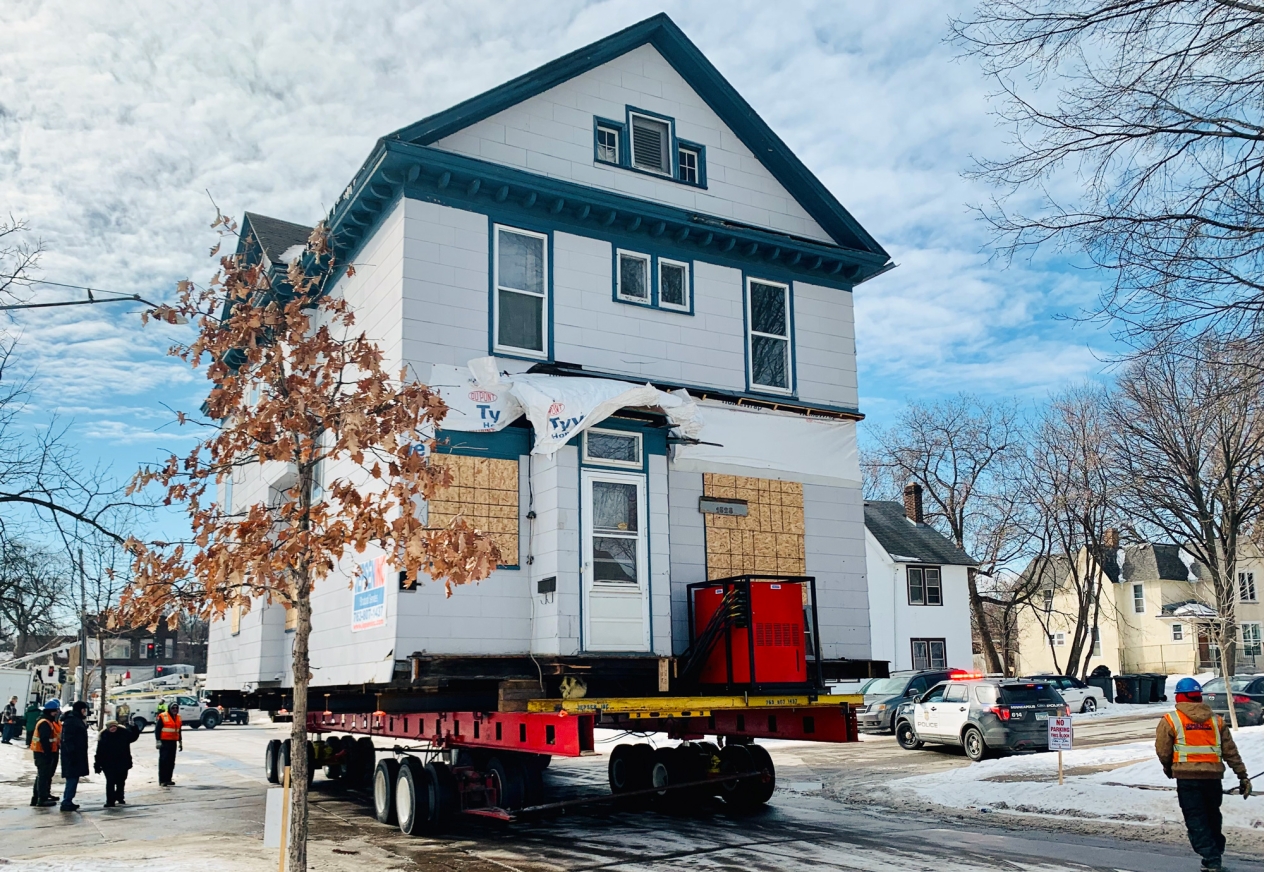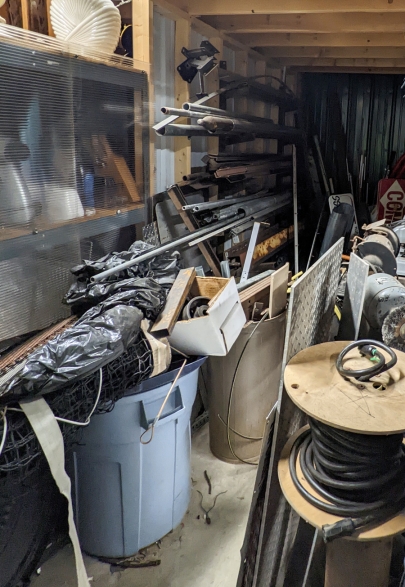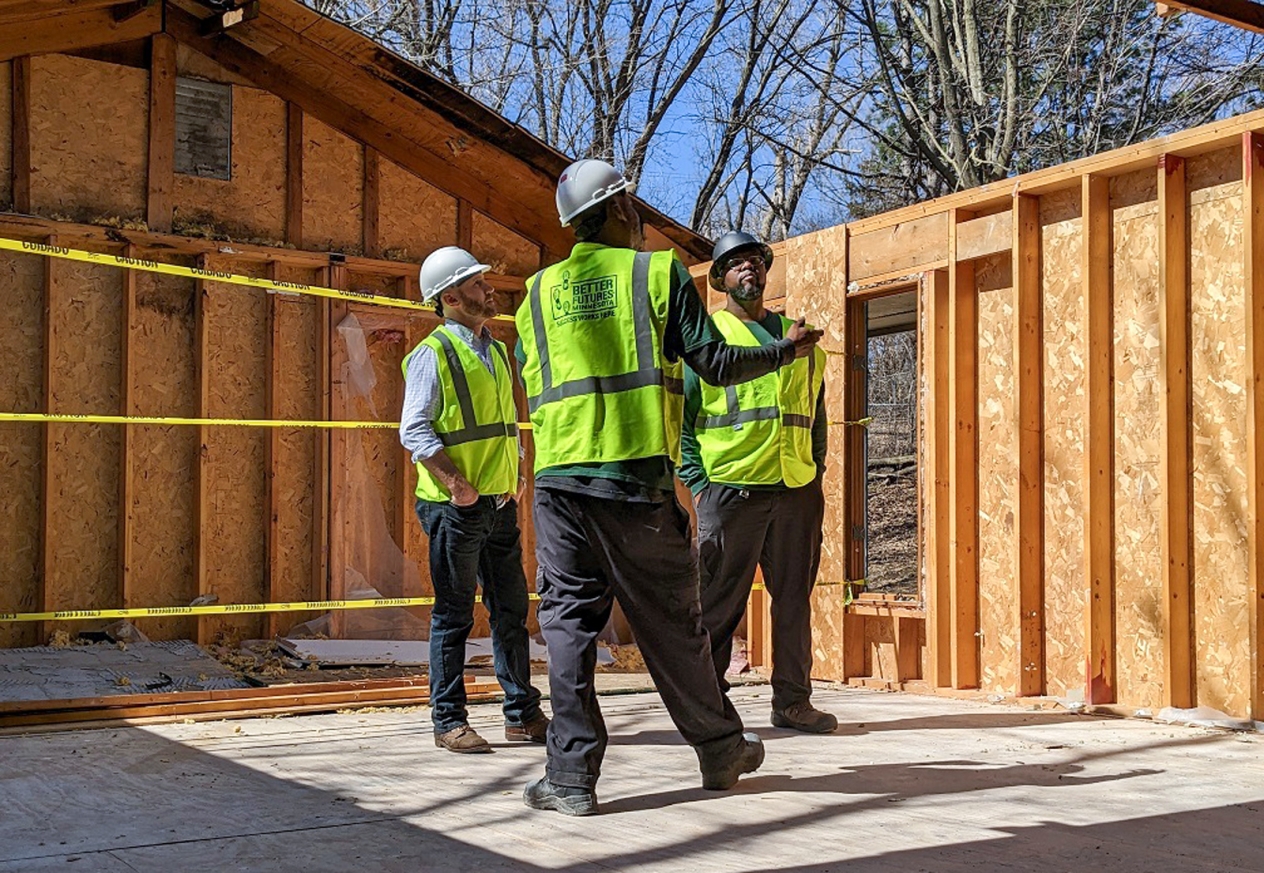
A new MPCA grant aims to curb waste created from demolishing buildings by funding innovative material reuse projects
The two-story Victorian with dark blue trim and peaked roof towered over neighboring houses in its Minneapolis neighborhood. It dated to 1900 and with the decorative cornice brackets lining the roof overhang it looked very much a fixture of the area.
And then it started to move.
Already jacked up and placed on long I-beams atop multi-wheeled dollies, the house made its way off its foundations and on to a new location along blocked-off streets, under power lines lifted just for this purpose, and past plenty of gawkers.
While a sizable undertaking, the relocation of the Victorian in 2022 also kept a significant amount of building materials — the beams, flooring, siding, and windows, and trim that made up the Victorian — from going into a dumpster and on to a landfill. That's important in the effort to cut back on construction and demolition waste, which is a massive problem in Minnesota and across the country.
"We don't have unlimited building material resources, nor do we have unlimited space for landfilling destroyed buildings," said Melissa Wenzel, the MPCA's built environment sustainability administrator. "This disposable building practice has to stop."
For that reason, the MPCA has made about $2 million available in grants to projects focused on sustainable building practices, up to and including relocating houses instead of simply tearing them down.
Demolition's waste problem
Every year, the United States generates about 600 million tons of waste from building construction, renovation, and demolition, or about twice as much waste as it generates from household trash, according to the U.S. Environmental Protection Agency.
By one estimate, demolishing an average American home can put about the same amount of material by weight into the landfill as the average American throws in the trash over a lifetime.
In addition to the problem of where to put all the waste materials from demolishing houses and other buildings, discarding those materials also means wasting the resources and energy that went into creating those materials and generating additional unnecessary pollution and waste in the production of new building materials.
"There are clear opportunities to break the cycle of demolishing usable buildings and wasting valuable materials to immediately build replacement structures with new building materials," Wenzel said. "Many buildings can be renovated or adaptively reused, preventing an entire building of materials from being landfilled or recycled. Building materials can also be salvaged and reused if a structure is carefully unbuilt."
Curbing construction debris
In Minnesota, where about 334,000 tons of building materials waste is generated each year, more than 100 organizations are already working to reduce construction and demolition waste.
Some — like Habitat for Humanity's ReStores — are immediately recognizable as solutions to the problem of construction and demolition waste. But the list also includes diversion and reuse programs at the county and township levels; county grants for the deconstruction of buildings; businesses and nonprofits like Lumberstash, Bridging, and North Shore Architectural Antiques that provide markets for salvaged construction materials; and historic preservation organizations that work to prevent buildings from demolition.

The diversion and reuse program in Linwood Township in northeast Anoka County, for example, focuses on repurposing excess materials from new construction projects. The township's recycling coordinator, Paul Deuth, said the program takes in all sorts of materials, including sheetrock, bathroom and kitchen tiles, conduit, insulation, PVC pipe and fittings, plywood, shingles, tar paper, and house wrap.
"We squirrel them around the property anywhere we can, up against the fences and buildings," he said.
The township then makes the materials available for sale on a donation-based pay-what-you-can system and puts all of the proceeds back into maintaining the program.
In Hennepin County, a $100,000 grant program for building reuse projects has not only helped with the installation of used building materials in remodeling, renovation, and new building projects, it has also funded the careful deconstruction of buildings. Interest in the program is high, too: So far in 2024, the county has received 51 applications for building reuse grants from residential and commercial property owners.
Then for those instances when a building can't stay where it is but still has value, building movers can step in. Ashlee Anderson of Anderson Building Movers in Paynesville said the company moves about 200 buildings a year, often from highway or commercial development projects to new locations to continue to be used as housing.
"We've moved historical barns, churches, homes, and even mills," she said. "These have been used as historical preservation projects, event centers, and unique homes."
It's a win-win-win situation, she said, in which the landowner doesn't have to pay for demolition, the person getting the building often pays less than what a newly built structure would cost, and the environmental impact from construction and demolition waste and from new materials is limited.

Funding for building material reuse programs
The existing efforts are only a fraction of what's possible for reuse of buildings and building materials, though. About 43 percent of building materials are captured for reuse or recycling in Minnesota, with about 189,000 tons still going to landfills or waste-to-energy facilities every year.
Still, successes in building material reuse like the above examples helped the MPCA make the case to the Legislature that funding more such opportunities "could make a huge difference in how we think about and manage buildings and their materials," Wenzel said.
"We know that funding opportunities are not the same across the state, yet many organizations and local government entities want to provide similar opportunities like these examples," Wenzel said.
The Legislature listened: Last year, it set aside $2 million for the MPCA to distribute as statewide sustainable building and materials management grants.
The grants, which opened in April, can be used for a variety of projects, including starting and operating a reuse center for salvaged building materials, developing a deconstruction training program that offers hands-on education and experience, and providing technical assistance for preservation or relocation efforts. Grant recipients must match at least 25 percent of the total program cost, either in cash or in-kind services.
"At the very least, we at the MPCA want to demonstrate that we're listening to our stakeholders when they say they need tools and funding to carry out more sustainable built environment goals," Wenzel said. "We hope that these opportunities turn into long-lasting programs."
The MPCA will accept applications for the statewide sustainable building and materials management grants through June 20.
